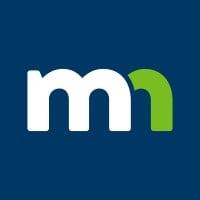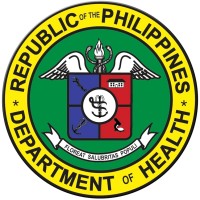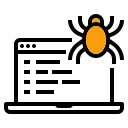Company Details
child-welfare-information-gateway
None employees
3,270
923
childwelfare.gov
0
CHI_3126281
In-progress

Child Welfare Information Gateway Company CyberSecurity Posture
childwelfare.govA service of the Children's Bureau, Child Welfare Information Gateway connects child welfare, adoption, and related professionals to resources on child welfare, child abuse and neglect, out-of-home care, adoption, and more. We aim to promote the safety, permanency, and well-being of children, youth, and families through access to print and electronic publications, websites, databases, and online learning tools that improve child welfare practice and can be shared with families. Get our email updates to stay current on the latest news, research, and best practices in child welfare: https://www.childwelfare.gov/news-events/subscriptions/
Company Details
child-welfare-information-gateway
None employees
3,270
923
childwelfare.gov
0
CHI_3126281
In-progress
Between 750 and 799

 CWIG Global Score (TPRM)
CWIG Global Score (TPRM)XXXX

Description: In a major cyberattack on the U.S. Department of Health and Human Services, attackers were able to infiltrate network systems and gain unauthorized access to a vast quantity of sensitive personal health information. The breach affected millions of individuals, compromising their private data, medical records, and possibly leading to widespread fraud. The attack also disrupted critical healthcare services, which had cascading effects on patient care and operational efficacy. The incident exposed the necessity for robust cybersecurity measures in the healthcare industry and prompted an urgent reassessment of data protection protocols within the department.
Description: The U.S. Department of Health and Human Services (HHS) proposed a strategic approach to enhance healthcare cybersecurity, which met with resistance from the American Hospital Association (AHA). This cybersecurity strategy emphasizes voluntary performance goals, resource provision, enforcement strategy, and a centralized HHS cybersecurity hub. The AHA, however, opposed mandatory cybersecurity requirements, emphasizing the need for cooperative federal support over punitive measures since cyberattacks often originate from sophisticated external entities and third-party vendors. The debate underlies the challenge of balancing patient and data protection with the practicalities and costs of cybersecurity in healthcare.
Description: A phishing event that affected 10,831 people also affected 7,678 patients, which they reported to HHS on behalf of relevant affiliated nursing facilities. HHS stated in its closing remarks that names, birth and death dates, Social Security numbers, medical record numbers, health insurance information, clinical information, and treatment information were among the protected health information (PHI) that was implicated. CCC strengthened its administrative and technical security measures in response to this intrusion, which improved the protection of its PHI. Free credit monitoring and identity theft recovery services were made available to the affected parties. Additionally, OCR procured confirmation that CCC carried out the aforementioned remedial measures and offered technical support to CCC concerning its security management protocol.
Description: The U.S. Department of Health and Human Services has documented significant financial losses due to Qilin ransomware attacks, with incidents causing damages ranging from $6 million to $40 million. These attacks primarily targeted healthcare and government agencies, causing severe disruptions and financial strain. The ransomware's sophisticated encryption techniques and evasion tactics have made it a formidable threat, leading to substantial financial and operational impacts.


No incidents recorded for Child Welfare Information Gateway in 2025.
No incidents recorded for Child Welfare Information Gateway in 2025.
No incidents recorded for Child Welfare Information Gateway in 2025.
CWIG cyber incidents detection timeline including parent company and subsidiaries

A service of the Children's Bureau, Child Welfare Information Gateway connects child welfare, adoption, and related professionals to resources on child welfare, child abuse and neglect, out-of-home care, adoption, and more. We aim to promote the safety, permanency, and well-being of children, youth, and families through access to print and electronic publications, websites, databases, and online learning tools that improve child welfare practice and can be shared with families. Get our email updates to stay current on the latest news, research, and best practices in child welfare: https://www.childwelfare.gov/news-events/subscriptions/


State government is more than senators, representatives, and elected officials. We build highways, provide drivers licenses, protect our children and vulnerable populations, create jobs, connect Hoosiers to job opportunities, maintain state parks, train law enforcement officers, and we run museums

Minnesota State Government is the third largest employer in the state of Minnesota, employing over 50,000 diverse and talented employees in more than 100 state agencies, boards, commissions, colleges, and universities. Our workplaces can be found across the state in 86 out of 87 Minnesota counties a

EThekwini Municipality is a Metropolitan Municipality found in the South African province of KwaZulu-Natal. Home to the world-famous city of Durban. EThekwini is the largest City in the province and the third largest city in the country. It is a sophisticated cosmopolitan city of over 3 468 088 peop

With a workforce of 30,000 people, and opportunities in 1,000 different job categories, the City of Philadelphia is one of the largest employers in Southeastern Pennsylvania. As an employer, we operate through the guiding principles of service, integrity, respect, accountability, collaboration, dive

The Philippine Department of Health (abbreviated as DOH; Filipino: Kagawaran ng Kalusugan) is the executive department of the Philippine government responsible for ensuring access to basic public health services by all Filipinos through the provision of quality health care and the regulation of all

Californians deserve a government that works for them and with them. One that will work to ensure opportunity and justice. We are building a California not for the few, but for all — including those who have historically been left out. We are doing the work to make our state a place for every Cali
.png)
Career paths in management, information technology, law, mission support, public affairs and community outreach are available within the agency.
A lawsuit filed by Nebraska Attorney General Mike Hilgers over the 2024 Change Healthcare data breach has been allowed to proceed after...
The HIPAA Journal has compiled healthcare data breach statistics from October 2009, when the Department of Health and Human Services (HHS)...
Over the past year, Microsoft Threat Intelligence and Microsoft Defender Experts have observed the ClickFix social engineering technique...
Gateways play a vital role in securing networks by managing and controlling data flows between different security domains.
On July 19, 2025, Microsoft Security Response Center (MSRC) published a blog addressing active attacks against on-premises SharePoint...
In Michigan, there is no minimum age at which children may be left alone without supervision.
If you've received a denial of a treatment, medication, or service from your health insurance you may be able to request a review.
Temple offered a free, five-part cybersecurity clinic to educate community residents about online criminal activities and ways to prevent them.

Explore insights on cybersecurity incidents, risk posture, and Rankiteo's assessments.
The official website of Child Welfare Information Gateway is https://www.childwelfare.gov/.
According to Rankiteo, Child Welfare Information Gateway’s AI-generated cybersecurity score is 764, reflecting their Fair security posture.
According to Rankiteo, Child Welfare Information Gateway currently holds 0 security badges, indicating that no recognized compliance certifications are currently verified for the organization.
According to Rankiteo, Child Welfare Information Gateway is not certified under SOC 2 Type 1.
According to Rankiteo, Child Welfare Information Gateway does not hold a SOC 2 Type 2 certification.
According to Rankiteo, Child Welfare Information Gateway is not listed as GDPR compliant.
According to Rankiteo, Child Welfare Information Gateway does not currently maintain PCI DSS compliance.
According to Rankiteo, Child Welfare Information Gateway is not compliant with HIPAA regulations.
According to Rankiteo,Child Welfare Information Gateway is not certified under ISO 27001, indicating the absence of a formally recognized information security management framework.
Child Welfare Information Gateway operates primarily in the Health and Human Services industry.
Child Welfare Information Gateway employs approximately None employees people worldwide.
Child Welfare Information Gateway presently has no subsidiaries across any sectors.
Child Welfare Information Gateway’s official LinkedIn profile has approximately 3,270 followers.
Child Welfare Information Gateway is classified under the NAICS code 923, which corresponds to Administration of Human Resource Programs.
No, Child Welfare Information Gateway does not have a profile on Crunchbase.
Yes, Child Welfare Information Gateway maintains an official LinkedIn profile, which is actively utilized for branding and talent engagement, which can be accessed here: https://www.linkedin.com/company/child-welfare-information-gateway.
As of November 28, 2025, Rankiteo reports that Child Welfare Information Gateway has experienced 4 cybersecurity incidents.
Child Welfare Information Gateway has an estimated 403 peer or competitor companies worldwide.
Incident Types: The types of cybersecurity incidents that have occurred include Data Leak, Breach, Cyber Attack and Ransomware.
Total Financial Loss: The total financial loss from these incidents is estimated to be $6 million.
Detection and Response: The company detects and responds to cybersecurity incidents through an remediation measures with strengthened administrative and technical security measures, remediation measures with free credit monitoring and identity theft recovery services..
Title: Phishing Incident Affecting Nursing Facilities
Description: A phishing event that affected 10,831 people also affected 7,678 patients, which they reported to HHS on behalf of relevant affiliated nursing facilities.
Type: Phishing
Attack Vector: Phishing
Title: Healthcare Cybersecurity Strategy Debate Between HHS and AHA
Description: The U.S. Department of Health and Human Services (HHS) proposed a strategic approach to enhance healthcare cybersecurity, which met with resistance from the American Hospital Association (AHA). This cybersecurity strategy emphasizes voluntary performance goals, resource provision, enforcement strategy, and a centralized HHS cybersecurity hub. The AHA, however, opposed mandatory cybersecurity requirements, emphasizing the need for cooperative federal support over punitive measures since cyberattacks often originate from sophisticated external entities and third-party vendors. The debate underlies the challenge of balancing patient and data protection with the practicalities and costs of cybersecurity in healthcare.
Type: Cyber Attack
Title: Cyberattack on U.S. Department of Health and Human Services
Description: Attackers infiltrated network systems and gained unauthorized access to sensitive personal health information, affecting millions of individuals and disrupting critical healthcare services.
Type: Data Breach
Attack Vector: Network Infiltration
Threat Actor: Unknown
Title: Qilin Ransomware Attacks
Description: Qilin ransomware has rapidly ascended to become the world’s most prevalent ransomware threat, accumulating over $50 million in ransom payments throughout 2024 alone. Originally developed as ‘Agent’ in 2022 and later recorded in the Rust programming language, this sophisticated malware has evolved into a formidable weapon targeting critical infrastructure across more than 25 countries.
Type: Ransomware
Attack Vector: Spearphishing campaignsRemote Monitoring & Management software exploitationMultifactor authentication bombingSIM swapping techniques
Vulnerability Exploited: CVE-2023-27532
Threat Actor: Scattered Spidersentities associated with North Korea
Motivation: Financial gain
Common Attack Types: The most common types of attacks the company has faced is Breach.
Identification of Attack Vectors: The company identifies the attack vectors used in incidents through Spearphishing campaignsRemote Monitoring & Management software exploitationMultifactor authentication bombingSIM swapping techniques.

Data Compromised: Names, Birth and death dates, Social security numbers, Medical record numbers, Health insurance information, Clinical information, Treatment information

Data Compromised: Sensitive personal health information, Medical records
Systems Affected: Network systems
Operational Impact: Disruption of critical healthcare services
Brand Reputation Impact: Prompted urgent reassessment of data protection protocols
Identity Theft Risk: Possibly leading to widespread fraud

Financial Loss: $6 million to $40 million per incident
Systems Affected: VMware ESXi infrastructurecritical infrastructure
Average Financial Loss: The average financial loss per incident is $1.50 million.
Commonly Compromised Data Types: The types of data most commonly compromised in incidents are Names, Birth And Death Dates, Social Security Numbers, Medical Record Numbers, Health Insurance Information, Clinical Information, Treatment Information, , Sensitive Personal Health Information, Medical Records and .

Entity Name: CCC
Entity Type: Healthcare
Industry: Healthcare
Customers Affected: 10831

Entity Name: ['U.S. Department of Health and Human Services', 'American Hospital Association']
Entity Type: Government Agency, Non-profit Organization
Industry: Healthcare
Location: United States

Entity Name: U.S. Department of Health and Human Services
Entity Type: Government Department
Industry: Healthcare
Location: United States
Size: Large
Customers Affected: Millions of individuals

Industry: Healthcare, Government agencies, Manufacturing, Legal, Professional services, Financial services

Remediation Measures: Strengthened administrative and technical security measuresFree credit monitoring and identity theft recovery services

Type of Data Compromised: Names, Birth and death dates, Social security numbers, Medical record numbers, Health insurance information, Clinical information, Treatment information
Number of Records Exposed: 10831
Sensitivity of Data: High

Type of Data Compromised: Sensitive personal health information, Medical records
Number of Records Exposed: Millions
Sensitivity of Data: High
Personally Identifiable Information: yes

Data Encryption: ['AES-256-CTR', 'OAEP', 'ChaCha20']
Prevention of Data Exfiltration: The company takes the following measures to prevent data exfiltration: Strengthened administrative and technical security measures, Free credit monitoring and identity theft recovery services, .

Ransom Paid: Over $50 million in 2024
Ransomware Strain: Qilin
Data Encryption: ['AES-256-CTR', 'OAEP', 'ChaCha20']

Regulatory Notifications: HHS

Lessons Learned: Necessity for robust cybersecurity measures in the healthcare industry

Recommendations: Immutable backup strategies targeting Windows Volume Shadow Copy Service (VSS) deletion attempts, Zero Trust Architecture with network segmentation, Prioritize vulnerability patch management for network-facing systems, Deploy multi-layered antivirus solutions, Conduct regular tabletop exercises focused on ransomware scenariosImmutable backup strategies targeting Windows Volume Shadow Copy Service (VSS) deletion attempts, Zero Trust Architecture with network segmentation, Prioritize vulnerability patch management for network-facing systems, Deploy multi-layered antivirus solutions, Conduct regular tabletop exercises focused on ransomware scenariosImmutable backup strategies targeting Windows Volume Shadow Copy Service (VSS) deletion attempts, Zero Trust Architecture with network segmentation, Prioritize vulnerability patch management for network-facing systems, Deploy multi-layered antivirus solutions, Conduct regular tabletop exercises focused on ransomware scenariosImmutable backup strategies targeting Windows Volume Shadow Copy Service (VSS) deletion attempts, Zero Trust Architecture with network segmentation, Prioritize vulnerability patch management for network-facing systems, Deploy multi-layered antivirus solutions, Conduct regular tabletop exercises focused on ransomware scenariosImmutable backup strategies targeting Windows Volume Shadow Copy Service (VSS) deletion attempts, Zero Trust Architecture with network segmentation, Prioritize vulnerability patch management for network-facing systems, Deploy multi-layered antivirus solutions, Conduct regular tabletop exercises focused on ransomware scenarios
Key Lessons Learned: The key lessons learned from past incidents are Necessity for robust cybersecurity measures in the healthcare industry.

Source: HHS

Source: FBI

Source: U.S. Department of Health and Human Services

Source: Qualys

Source: ANY.RUN
Additional Resources: Stakeholders can find additional resources on cybersecurity best practices at and Source: HHS, and Source: FBI, and Source: U.S. Department of Health and Human Services, and Source: Qualys, and Source: ANY.RUN.

Entry Point: Spearphishing Campaigns, Remote Monitoring & Management Software Exploitation, Multifactor Authentication Bombing, Sim Swapping Techniques,
High Value Targets: Manufacturing, Legal, Professional Services, Financial Services,
Data Sold on Dark Web: Manufacturing, Legal, Professional Services, Financial Services,
Ransom Payment History: The company has Paid ransoms in the past.
Last Attacking Group: The attacking group in the last incident were an Unknown and Scattered Spidersentities associated with North Korea.
Highest Financial Loss: The highest financial loss from an incident was ['$6 million to $40 million per incident'].
Most Significant Data Compromised: The most significant data compromised in an incident were Names, Birth and death dates, Social Security numbers, Medical record numbers, Health insurance information, Clinical information, Treatment information, , Sensitive personal health information, medical records and .
Most Significant System Affected: The most significant system affected in an incident was VMware ESXi infrastructurecritical infrastructure.
Most Sensitive Data Compromised: The most sensitive data compromised in a breach were Social Security numbers, Sensitive personal health information, Treatment information, medical records, Health insurance information, Birth and death dates, Clinical information, Medical record numbers and Names.
Number of Records Exposed in Most Significant Breach: The number of records exposed in the most significant breach was 31.0M.
Highest Ransom Paid: The highest ransom paid in a ransomware incident was ['Over $50 million in 2024'].
Most Significant Lesson Learned: The most significant lesson learned from past incidents was Necessity for robust cybersecurity measures in the healthcare industry.
Most Significant Recommendation Implemented: The most significant recommendation implemented to improve cybersecurity was Zero Trust Architecture with network segmentation, Deploy multi-layered antivirus solutions, Prioritize vulnerability patch management for network-facing systems, Conduct regular tabletop exercises focused on ransomware scenarios and Immutable backup strategies targeting Windows Volume Shadow Copy Service (VSS) deletion attempts.
Most Recent Source: The most recent source of information about an incident are U.S. Department of Health and Human Services, HHS, FBI, ANY.RUN and Qualys.
.png)
Angular is a development platform for building mobile and desktop web applications using TypeScript/JavaScript and other languages. Prior to versions 19.2.16, 20.3.14, and 21.0.1, there is a XSRF token leakage via protocol-relative URLs in angular HTTP clients. The vulnerability is a Credential Leak by App Logic that leads to the unauthorized disclosure of the Cross-Site Request Forgery (XSRF) token to an attacker-controlled domain. Angular's HttpClient has a built-in XSRF protection mechanism that works by checking if a request URL starts with a protocol (http:// or https://) to determine if it is cross-origin. If the URL starts with protocol-relative URL (//), it is incorrectly treated as a same-origin request, and the XSRF token is automatically added to the X-XSRF-TOKEN header. This issue has been patched in versions 19.2.16, 20.3.14, and 21.0.1. A workaround for this issue involves avoiding using protocol-relative URLs (URLs starting with //) in HttpClient requests. All backend communication URLs should be hardcoded as relative paths (starting with a single /) or fully qualified, trusted absolute URLs.
Forge (also called `node-forge`) is a native implementation of Transport Layer Security in JavaScript. An Uncontrolled Recursion vulnerability in node-forge versions 1.3.1 and below enables remote, unauthenticated attackers to craft deep ASN.1 structures that trigger unbounded recursive parsing. This leads to a Denial-of-Service (DoS) via stack exhaustion when parsing untrusted DER inputs. This issue has been patched in version 1.3.2.
Forge (also called `node-forge`) is a native implementation of Transport Layer Security in JavaScript. An Integer Overflow vulnerability in node-forge versions 1.3.1 and below enables remote, unauthenticated attackers to craft ASN.1 structures containing OIDs with oversized arcs. These arcs may be decoded as smaller, trusted OIDs due to 32-bit bitwise truncation, enabling the bypass of downstream OID-based security decisions. This issue has been patched in version 1.3.2.
Suricata is a network IDS, IPS and NSM engine developed by the OISF (Open Information Security Foundation) and the Suricata community. Prior to versions 7.0.13 and 8.0.2, working with large buffers in Lua scripts can lead to a stack overflow. Users of Lua rules and output scripts may be affected when working with large buffers. This includes a rule passing a large buffer to a Lua script. This issue has been patched in versions 7.0.13 and 8.0.2. A workaround for this issue involves disabling Lua rules and output scripts, or making sure limits, such as stream.depth.reassembly and HTTP response body limits (response-body-limit), are set to less than half the stack size.
Suricata is a network IDS, IPS and NSM engine developed by the OISF (Open Information Security Foundation) and the Suricata community. In versions from 8.0.0 to before 8.0.2, a NULL dereference can occur when the entropy keyword is used in conjunction with base64_data. This issue has been patched in version 8.0.2. A workaround involves disabling rules that use entropy in conjunction with base64_data.

Get company history
















Every week, Rankiteo analyzes billions of signals to give organizations a sharper, faster view of emerging risks. With deeper, more actionable intelligence at their fingertips, security teams can outpace threat actors, respond instantly to Zero-Day attacks, and dramatically shrink their risk exposure window.
Identify exposed access points, detect misconfigured SSL certificates, and uncover vulnerabilities across the network infrastructure.
Gain visibility into the software components used within an organization to detect vulnerabilities, manage risk, and ensure supply chain security.
Monitor and manage all IT assets and their configurations to ensure accurate, real-time visibility across the company's technology environment.
Leverage real-time insights on active threats, malware campaigns, and emerging vulnerabilities to proactively defend against evolving cyberattacks.




